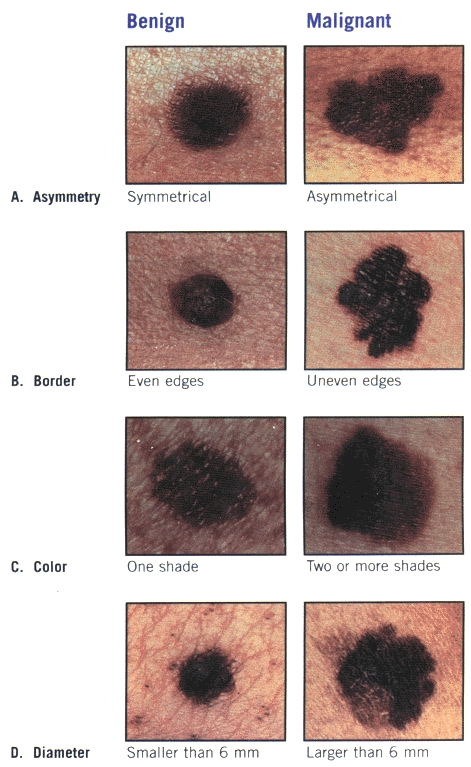What is melanoma?
April 30, 2018

What is melanoma? Most people have heard the term but may not know the specifics about this type of skin cancer, their personal risks, and what can be done to prevent melanoma. Let’s jump in to learn some more about this potentially preventable type of skin cancer.
Melanoma is the most fatal form of skin cancer. The Melanoma Research Foundation states, ‘in 2018, over 178,000 Americans are expected to be diagnosed with melanoma’. Melanoma develops when normal skin cells change into abnormal skin cells (become malignant), grow out of control, and can spread to parts of the body beyond the skin (metastasize). Melanoma can occur anywhere on the skin – including the skin that lines the mouth, nose, and genitals.
What does melanoma look like? Melanoma often appears like a black or brown mole but has characteristics that differentiate it from normal moles. The criteria used to differentiate a normal mole from a suspected melanoma is ABCDE.
A – Asymmetry (one half looks different than the other half)
B – Border irregularities (jagged or uneven edges)
C – Color variegation (different colors within same mole)
D – Diameter (larger than the eraser on the end of a pencil)
E – Evolution (changes in size, color, or shape over time)
These lesions can bleed, become swollen, red or crusty in addition to the previous criteria. It is recommended that if you have a mole or birthmark that you feel is abnormal to show it to your healthcare provider.
Who is at risk for developing melanoma? People with the following risk factors are at highest likelihood for developing melanoma:
· White males over 50 years of age
· Family history of melanoma
· Total ‘mole count’ above 25
· One or more abnormal moles
· Childhood radiation exposure
· Chronic outdoor activities without adequate sun protection
· A blistering or painful sunburn before the age of 30
· Indoor tanning bed use
· Red hair phenotype
· Suppressed immune system
What to do if you are at risk for developing melanoma? For high risk patients, it is suggested that a healthcare provider performs a screening exam for melanoma. This involves a full body skin exam, generally on an annual basis. For the general population (not in these higher risk categories), a routine clinical skin exam is not necessary. However, people can conduct their own skin assessments at home and by knowing the warning signs can alert their healthcare provider about any concerning lesions.
How to decrease likelihood of developing melanoma?
· Stay out of the sun in the middle of the day (10am – 4pm)
· Wear sunscreen and reapply it often
· Wear a wide-brimmed hat, long sleeved shirt, or long pants
· Do NOT use tanning beds
Melanoma can be prevented by proper identification of abnormal moles, knowing your risk, performing routine skin assessments, and protecting your skin from harmful UV rays.

Sources:
1. Screening and early detection of melanoma in adults and adolescents. www.uptodate.com
2. Patient education: Melanoma skin cancer (The Basics) www.uptodate.com
3. Melanoma Fact Sheet. Melanoma Research Foundation www.melanoma.org